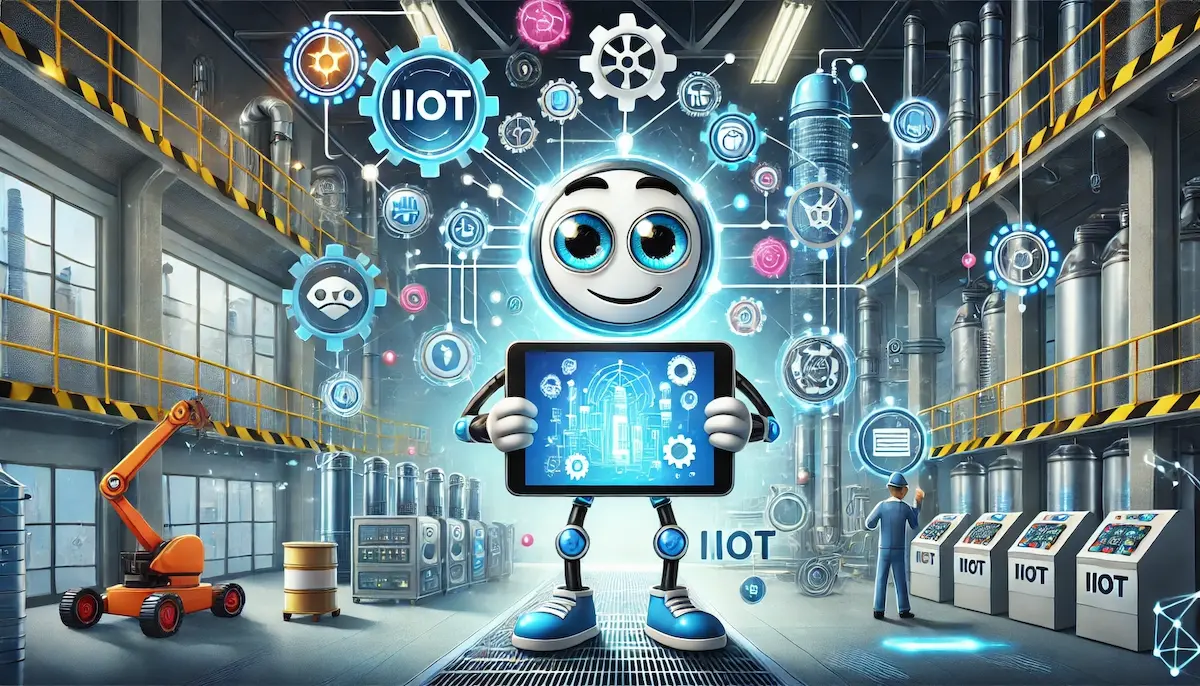The Industrial Internet of Things (IIoT) refers to the integration of internet-connected sensors, devices, and machinery in industrial environments. This interconnected network enables the collection, exchange, and analysis of data to optimize industrial processes, enhance efficiency, and improve productivity.
The Importance of IIoT
IIoT is vital for several reasons:
- Enhanced Efficiency: Real-time monitoring and data analysis streamline operations, reducing waste and downtime.
- Predictive Maintenance: Anticipating equipment failures before they occur minimizes disruptions and maintenance costs.
- Improved Safety: Monitoring hazardous environments and conditions enhances worker safety.
- Informed Decision-Making: Data-driven insights enable better strategic decisions and operational adjustments.
- Cost Savings: Optimization of resources and processes leads to significant cost reductions.
Key Components of IIoT
Sensors and Devices
Sensors and devices are the foundational elements of IIoT. They collect data on various parameters, such as temperature, pressure, vibration, and humidity, providing crucial insights into industrial processes.
Connectivity
Reliable and robust connectivity solutions, such as Wi-Fi, Ethernet, cellular networks, and LPWAN (Low Power Wide Area Networks), ensure seamless data transmission between sensors, devices, and central systems.
Edge Computing
Edge computing processes data near the source of generation, reducing latency and bandwidth use. This enables real-time analytics and quicker decision-making, especially critical for time-sensitive applications.
Cloud Computing
Cloud platforms store and process large volumes of data collected from IIoT devices. They offer scalable storage solutions and powerful computational capabilities for advanced data analytics and machine learning applications.
Data Analytics
Advanced data analytics tools analyze the collected data to uncover patterns, trends, and anomalies. These insights help in optimizing processes, predicting maintenance needs, and improving overall operational efficiency.
Security
Robust security measures are essential to protect IIoT systems from cyber threats. This includes encryption, authentication, and access control to ensure data integrity and confidentiality.
Applications of IIoT
Manufacturing
IIoT is extensively used in manufacturing to monitor and optimize production lines, enhance quality control, and perform predictive maintenance. It helps in reducing downtime, improving product quality, and increasing operational efficiency.
Energy and Utilities
In the energy sector, IIoT monitors and manages power plants, wind farms, and smart grids. It optimizes energy production, ensures grid stability, and improves the efficiency of utilities.
Transportation and Logistics
IIoT improves fleet management, route optimization, and asset tracking in transportation and logistics. It enhances supply chain visibility, reduces fuel consumption, and improves delivery times.
Oil and Gas
IIoT is used to monitor drilling rigs, pipelines, and refineries in the oil and gas industry. It helps in predictive maintenance, leak detection, and optimizing production processes.
Agriculture
In agriculture, IIoT enables precision farming by monitoring soil conditions, weather patterns, and crop health. It helps in optimizing irrigation, reducing resource usage, and improving crop yields.
Healthcare
IIoT applications in healthcare include monitoring medical equipment, managing hospital assets, and improving patient care through wearable devices and remote monitoring.
Benefits of IIoT
Increased Efficiency
Real-time monitoring and data analysis streamline operations, reducing waste and enhancing productivity. Automated systems and optimized processes lead to higher efficiency.
Predictive Maintenance
Predictive maintenance uses data analytics to predict equipment failures before they occur. This reduces unplanned downtime, extends equipment life, and lowers maintenance costs.
Improved Safety
IIoT enhances safety by monitoring hazardous conditions and environments. Real-time alerts and automated responses prevent accidents and protect workers.
Better Decision-Making
Data-driven insights enable informed decision-making. IIoT provides accurate and timely information, helping managers make strategic and operational adjustments.
Cost Reduction
Optimizing processes, reducing downtime, and improving resource management lead to significant cost savings. Efficient operations and predictive maintenance contribute to lower operational expenses.
Enhanced Quality Control
IIoT enables continuous monitoring of production processes and product quality. It helps in identifying defects early, ensuring consistent quality and reducing rework and waste.
Challenges of IIoT
Data Security and Privacy
Protecting IIoT systems from cyber threats is crucial. Ensuring data security and privacy involves robust encryption, authentication, and access control measures.
Integration and Interoperability
Integrating IIoT devices with existing systems and ensuring interoperability between different devices and platforms can be challenging. Standardization and compatibility are essential for seamless integration.
Scalability
As the number of connected devices increases, ensuring that the IIoT system can scale efficiently is critical. This involves managing large volumes of data and maintaining performance and reliability.
Data Management
Handling and processing vast amounts of data generated by IIoT devices require efficient data management solutions. Ensuring data accuracy, consistency, and availability is essential.
Initial Investment
Implementing IIoT involves significant upfront costs for sensors, connectivity, data infrastructure, and analytics tools. However, the long-term benefits often justify the initial investment.
The Future of IIoT
The future of IIoT is promising, with several trends driving its evolution:
Artificial Intelligence (AI) and Machine Learning
AI and machine learning will enhance IIoT by providing more accurate predictions, automated decision-making, and intelligent insights. These technologies will enable more proactive and efficient management of industrial processes.
5G Connectivity
The rollout of 5G networks will provide faster and more reliable connectivity, enhancing the capabilities of IIoT systems. It will enable higher data transmission rates and support more connected devices.
Edge Computing
Edge computing will become more prevalent, enabling real-time data processing and analytics at the source. This will reduce latency and bandwidth usage, improving the efficiency of IIoT applications.
Advanced Analytics and Big Data
Advancements in analytics and big data will provide deeper insights and more sophisticated analysis, driving better decision-making and optimization.
Enhanced Interoperability
Efforts to standardize IIoT protocols and platforms will improve interoperability, making it easier to integrate and manage diverse IIoT devices and systems.
Conclusion
The Industrial Internet of Things (IIoT) is revolutionizing the way industries operate by providing real-time insights, predictive capabilities, and enhanced efficiency. By leveraging advanced technologies and data analytics, IIoT offers significant benefits across various sectors. As technology continues to evolve, the future of IIoT promises even greater capabilities and opportunities.
Blockfine thanks you for reading and hopes you found this article helpful.
